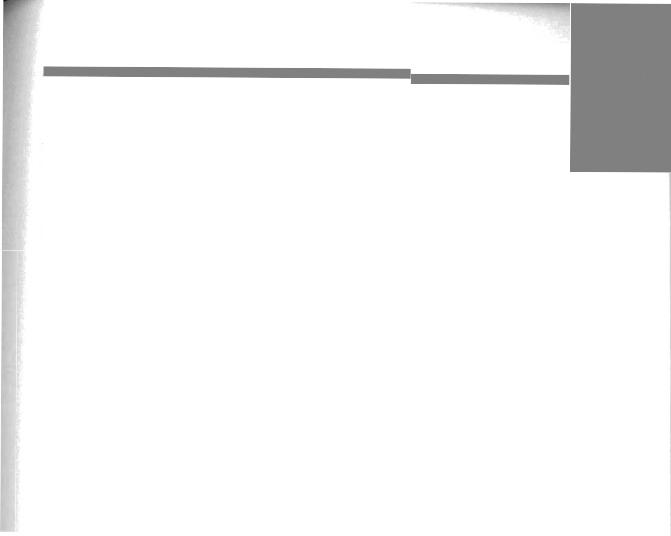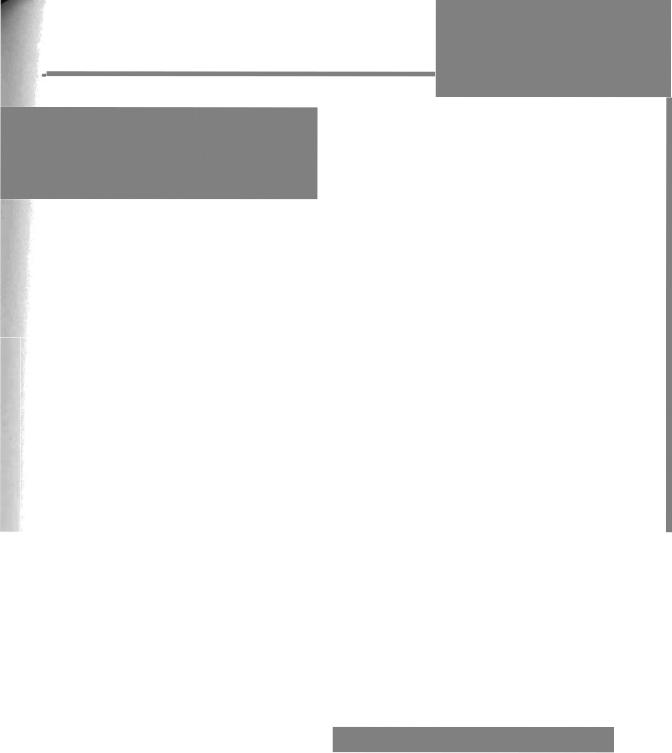
Stella_Cottrell_Critical_Thinking_Skills_Deve
.pdf

Critical thinking needs to be incorporated at many different stages in the process of producing a critical piece of work. This chapter has focused on applying a critical approach to reading and related notemaking.
It is not unusualfor people to suspend critical thinking when reading and making notes. For example, they often assume it is acceptable to read and make notes in a non-selective or non-critical way, amass a pile of notes, and then apply critical thinking to the notes that have been made. Whilst this is not an unacceptable strategy, it is not effective in terms of time management. Using such methods, you are more likely to read and take notes on material you will not use, and then repeat your reading of such unnecessary material in order to select what is needed.
Making notes in an uncritical way is also a risky strategy. It is much easier to become confused about which notes have been taken down verbatim from the text and to include these, by accident, in your own work. This would leave you open to charges of cheating and/or plagiarism.
This chapter recommends strategies which, if followed, are more likely to save you time, and to help you develop critical thinking skills as an ongoing process when reading and writing. Guidance on referencing your source materials is included: critical readers will want to ensure that they can find the source of information again in the future if they need it. If the material is to be used within a piece of writing, these details will be needed to refer the reader to the source materials.
Critical reading is assisted by identifying certain key pieces of informationthat can direct and focus your attention. Earlier chapters identified certain components of an argument, such as identifyingthe conclusion, as useful ways of finding the argument within a passage. This chapter draws attention to the importance of identifyingthe underlying theoretical perspective, where possible, in order to better evaluate the significance of the material to the author'spoint of view.
This chapter also emphasises the importance of developing skills in categorising and selecting information as component skills within critical thinking. Such skills contributeto more effective reasoning abilities, as they requireyou to find comparisons and exceptions, to look for factors that link and connect information, to develop an understanding of the relative significance of different pieces of information, and to make evaluative judgements.
Information on the sources
Donaldson, M. (1978) Children'sMirzds (London: Fontana).
For background on plant cuttings and PBRs: Hogan, C. (2004) 'GivingLawyers the Slip'.The Times, 24 August, p. 26.
On moral issues: Kohlberg, L. (1981) Essays on Mom1Development, vol. 1(New York: Harper ST ROW). Peters, R. S. (1974) 'MoralDevelopment: a Plea for Pluralism'.InR. S. Peters (ed.), Psychology and
Ethical Development (London: Allen & Unwin).
Gilligan, C. (1977) 'Ina Different Voice: Women's Conceptionsof Self and Morality'.Harvard EdllcationalReview, 47, 418-5 17.
164 Critical Thinking Skills |
O Stella Cottrell (ZOOS), Critical ThinkingSkills, |
|
Palgrave Macm~llanLtd |
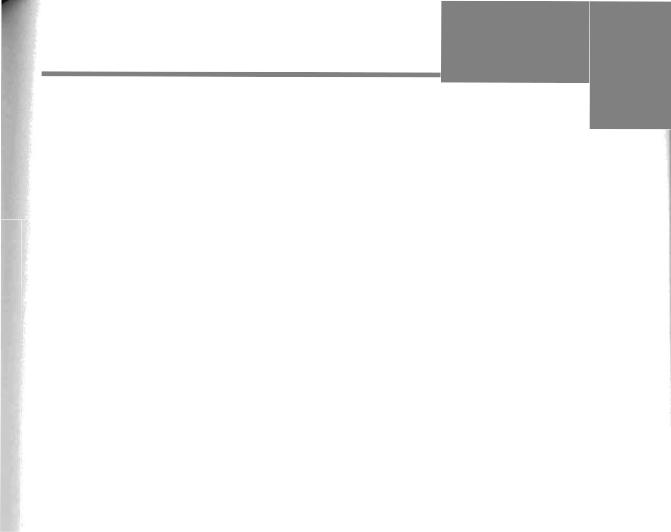
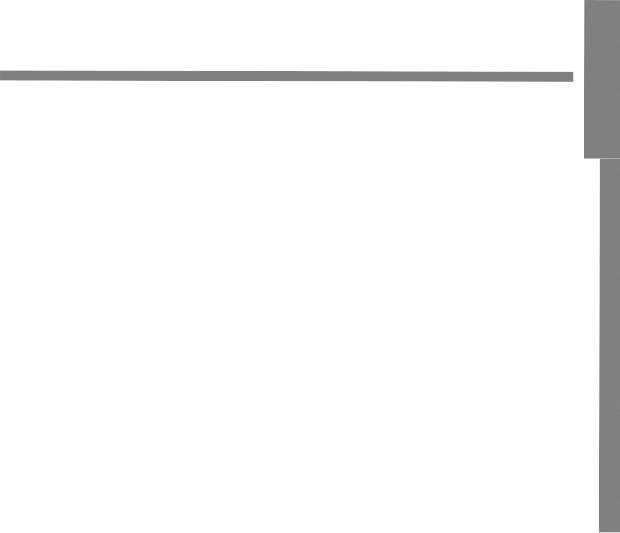
Answers t o activities in Chapter 9
Identifying theory (p. 150)
Only two texts have an explicit theoretical position. These are:
Text 10: that moral and ethical issues should be regarded as 'dilemmas' rather than as simple questions of right and wrong.
Text 1 2 that behaviour is affected primarily by how easy it is to act in an ethical way.
Passage 9.2
A Accurate interpretation.
Passage 9.3
B Misinterpretation. The text is very clear that it regards piracy as stealing, and makes no exceptions. Passage 9.3 waters this down, using words such as 'not usually' and 'most customers', suggesting there may be exceptions.
Categorising arguments (p. 151)
Text 1: sophistical, artistic and philanthropic Text 2: sophistical and philanthropic
Text 3: economic and legal
Text 4: economic
Text 5: philanthropic and sophistical Text 6: economic
Text 7: legal, economic, ethical
Text 8: sophistical and legal
Text 9: sophistical and legal
Text 10: ethical, legal
Text 11: none of these
Text 12: ethical, economic.
Accurate interpretations when reading (p. 152)
Passage 9.7
B Misinterpretation. The text doesn't state that the author, personally, is offering a service.
Passage 9.4
A Accurate interpretation.
Passage 9.5
B Misinterpretation. The author's argument is that gardeners who give away cuttings are cheating the people who breed new species of plant. It is true that the text implies that small gardeners will not be prosecuted in practice, but that isn't the argument.
Passage 9.6
B Misinterpretation. The passage does argue that there hasn't been a democratic process to decide that the law should make ultimate decisions of right and wrong. It also argues that positive changes have occurred when people stand up for what they believe. The text does not make recommendations. The argument is more abstract, pointing out that questions of right and wrong are complex and that there are different ways of looking at ethical issues. The implication is that there should be more public discussion of the concept of justice. However, the text doesn't advocate that people stop obeying the law on those grounds.
166 Critical Thinking Skills |
O Stella Cottrell (ZOOS), Criticnl Thinking Skills, |
|
Palgrave Macmillan Ltd |
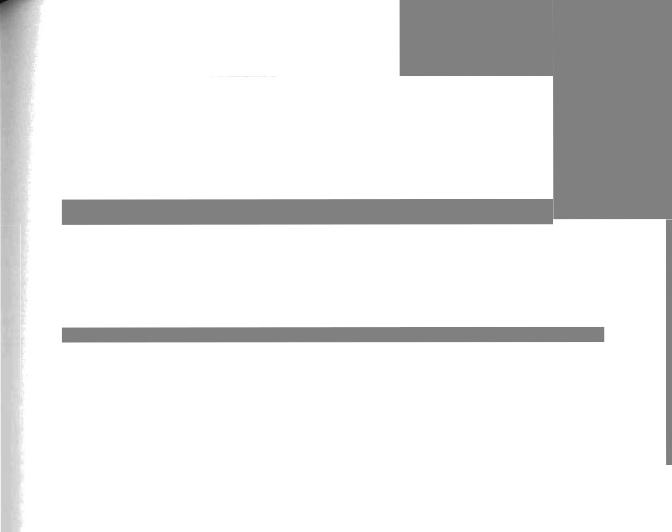

Characteristics of critical, analytical writing (1)
Content
In critical writing, most of the text is dedicated to presenting a case through providing reasons, using relevant evidence, comparing and evaluating alternative arguments, weighing up conflicting evidence, and forming judgements on the basis of the evidence. Background information of a general nature is used very sparingly, and only essential details are usually included. Description is kept to a minimum.
understand. Technical language can be used but should not be used simply to sound clever.
Often, an argument can sound clear in our own mind but does not come across clearly in our writing. It is not always easy to see which lines may be interpreted differently when read by someone else or what might be confusing or ambiguous. Skilful writers check through their writing several times, often by reading aloud, looking for any phrases that may be awkward to read or which could be open to a different interpretation by others.
A sense of audience
Good criticaI writing always keeps its future audience, or readers, in mind. The aim of an argument is to persuade others. When producing critical writing, it is important to consider how the message might be read by other people, especially people who might disagree with the evidence or the conclusions. A good critical writer knows which aspects of the argument are likely to be the most contentious, and the kind of evidence required in order to counter potential opposition within the reader.
Clarity
Critical writing should aim to be as clear as is possible. The aim is to convince the reader, so it is important that the style of writing makes it easy for the reader to see the point. Long, complicated or poorly punctuated sentences can make it difficult for the reader to follow the argument.
The language used for critical writing is generally sparse. It usually sticks to the facts and avoids emotional content, adjectives and flowery language or jargon. The aim is to present, as far as is possible, the points in a way that an intelligent general reader can
Analysis
Analytical writing is writing that looks at the evidence in a detailed and critical way. In particular, it weighs up the relative strengths and weaknesses of the evidence, pointing these out to the reader, so that it is clear how the writer has arrived at judgements and conclusions.
Selection
Presenting too much detail can mean the main argument becomes obscured. The reader may lose interest in tracking the line of reasoning and simply conclude that the argument is weak. Usually, writers cannot include detailed critical analyses of every point that supports their arguments. On the other hand, presenting too little detail can make it sound as if there is not enough concrete evidence to support the case.
Skilful writers select the most important points, often the most controversial points, to examine in detail. They may only allude briefly to other points, sometimes several together, in order to indicate that they are aware of these points. Strong critical writing uses a good balance of detailed analysis and sections that summarise arguments and evidence.
168 Critical Thinking Skills |
0 Stella Cottrell (ZOOS), Critical Tilinking Skills, |
Palgrave Macmillan Ltd
